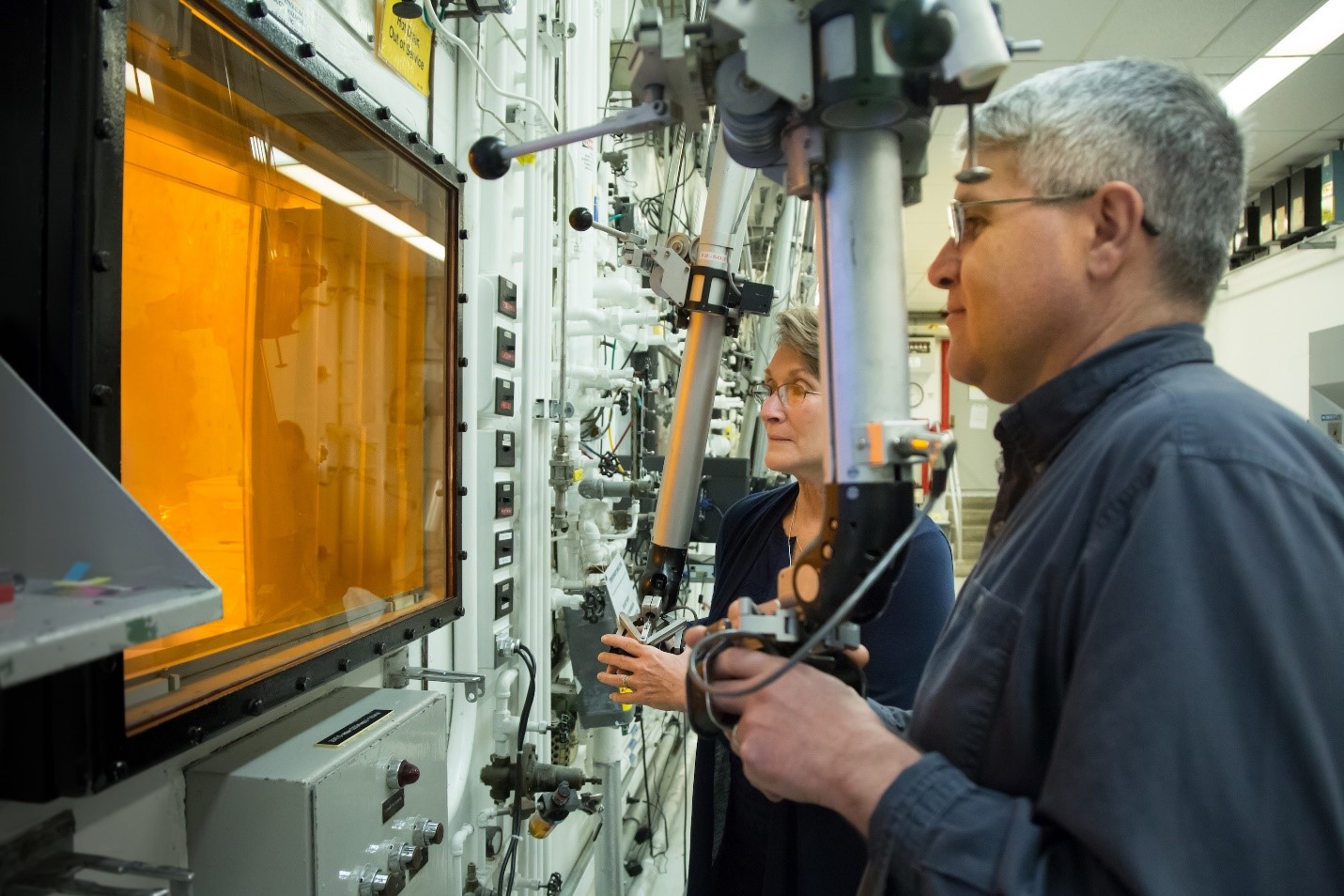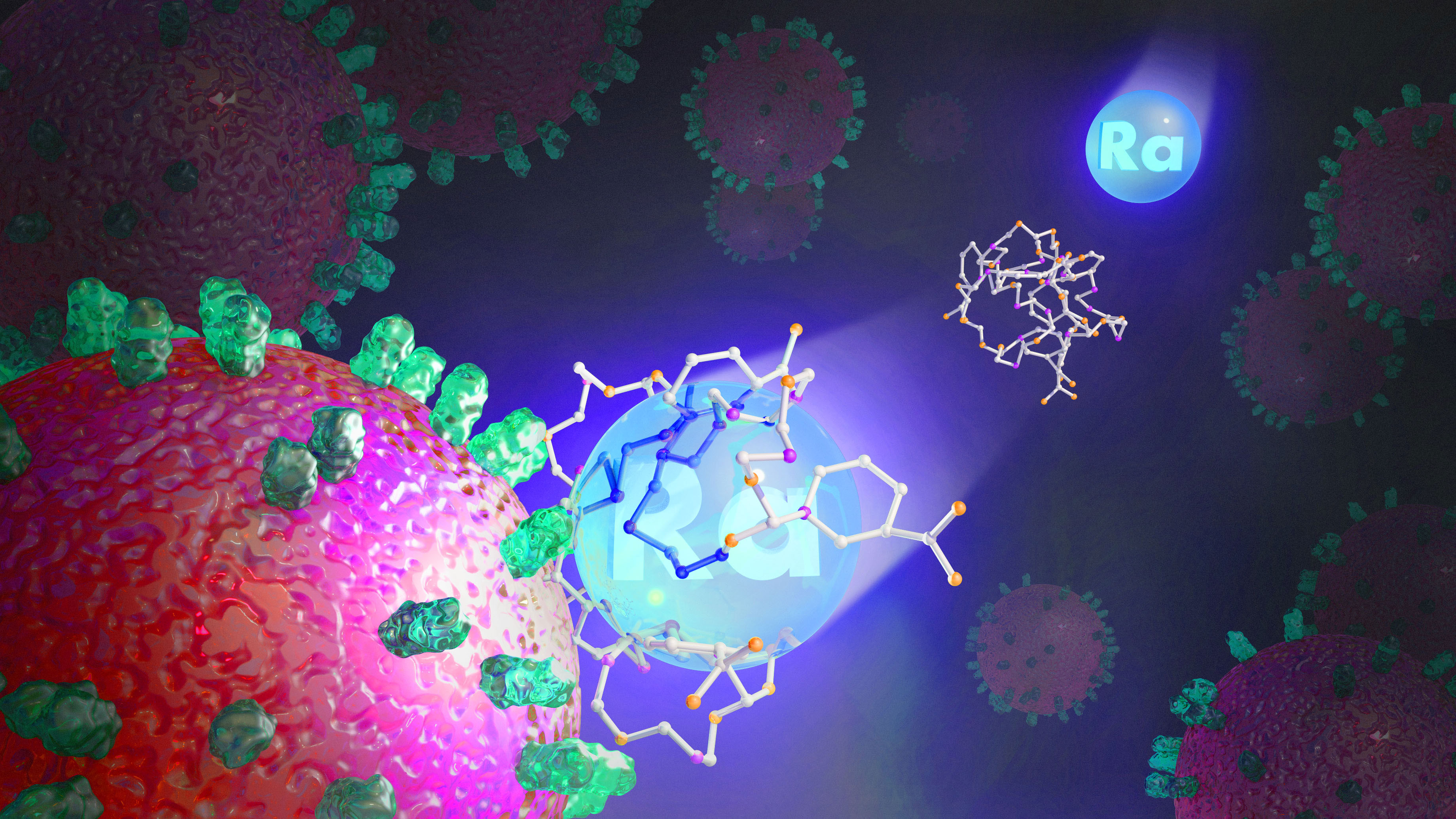Improving Isotope Supply for a Cancer-Fighting Drug
Production of actinium-227 ramps up for use in a drug to fight prostate cancer that has spread to bone.

The Science
Recycled medical devices, diverted from going to a special landfill, supply the key ingredient in a drug that treats prostate cancer. Researchers at Oak Ridge National Laboratory have developed and demonstrated a process to produce actinium-227 using harvested radium-226 from legacy medical devices. The devices are secured by the Department of Energy Isotope Program. Scientists convert the recovered and purified radium-226 into a suitable target for irradiation in a nuclear reactor. The target is irradiated, and actinium-227 is produced. It is separated and purified to supply a pharmaceutical firm’s new cancer-fighting drug. The unconsumed radium target is recycled.
The Impact
After the Food and Drug Administration approved this new drug to treat prostate cancer in 2013, it was clear more actinium would be needed. According to the pharmaceutical firm, the new drug is now approved in 52 countries. Doctors use the drug to treat a specific form of prostate cancer. The firm turned to the DOE Isotope Program and Oak Ridge National Laboratory (ORNL) to develop a new global source of actinium-227. Now, through a 10-year contract between the DOE Isotope Program and this firm, ORNL is producing actinium-227 to ensure castration-resistant prostate cancer patients have a reliable supply of this new treatment.
Summary
Radium-226 is recovered at ORNL from legacy medical devices secured by the DOE Isotope Program and diverted from a radioactive waste landfill. After extensive purification, the recovered radium-226 feedstock is fabricated into small targets that are irradiated in ORNL’s High Flux Isotope Reactor, a DOE Office of Science user facility. The reactor has the highest steady state of thermal neutron flux of any reactor in the world. Technologists use specialized nuclear facilities to dissolve the irradiated targets and chemically separate and purify the actinium-227 created during irradiation. The actinium-227 is then packaged in a cask and shipped to the firm. There, a team periodically extracts the radium-223 produced via radioactive decay of the ORNL-supplied actinium-227. The extract is shipped around the world for immediate use to treat a certain form of prostate cancer. Specifically, it is used to treat cancer that no longer responds to hormonal or surgical treatment aimed at lowering testosterone and that has spread only to the bone with symptoms.
Contact
Kevin J. Hart
DOE Isotope Program at Oak Ridge National Laboratory
HartKJ@ornl.gov
Funding
The Department of Energy (DOE) Isotope Program, managed by the Office of Nuclear Physics within DOE’s Office of Science, supported the work at Oak Ridge National Laboratory. Research was conducted at the High Flux Isotope Reactor, a DOE Office of Science user facility.
Publications
S. Hogle, R.A. Boll, K. Murphy, D. Denton, A. Owens, T.J. Haverlock, M. Garland, and S. Mirzadeh, “Reactor production of thorium-229.” Applied Radiation and Isotopes 114, 19 (2016). [DOI: 10.1016/j.apradiso.2016.05.002]
Related Links
Oak Ridge National Laboratory press release: ORNL ramps up production of key radioisotope for cancer-fighting drug
Bayer press release: Bayer partners with U.S. Department of Energy to produce key starting material for Xofigo® (radium Ra 223 dichloride) injection
Knoxville News Sentinel/USA Today network article: Oak Ridge National Lab producing isotopes to fight prostate cancer
Phys.Org article: ORNL ramps up production of key radioisotope for cancer-fighting drug
Physics World (IOP Publishing) article: ORNL ramps production of cancer drug radioisotope
Medical.net news article: ORNL increases production of actinium-227 to meet demand for cancer drug
Infosurhoy article: ORNL ramps up production of key radioisotope for cancer-fighting drug
Highlight Categories
Performer: DOE Laboratory , Industry , HFIR
Additional: Technology Impact



